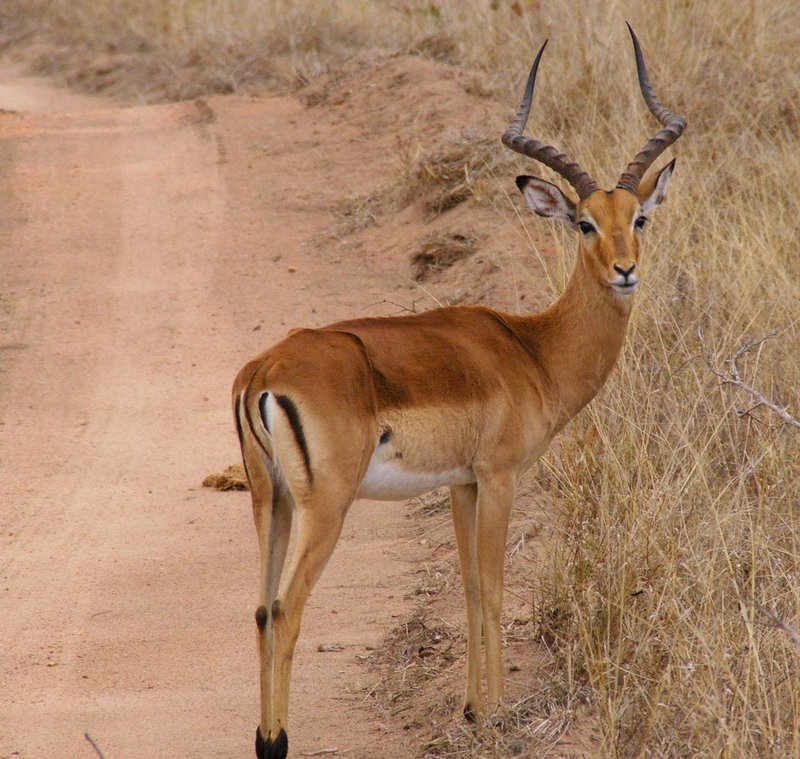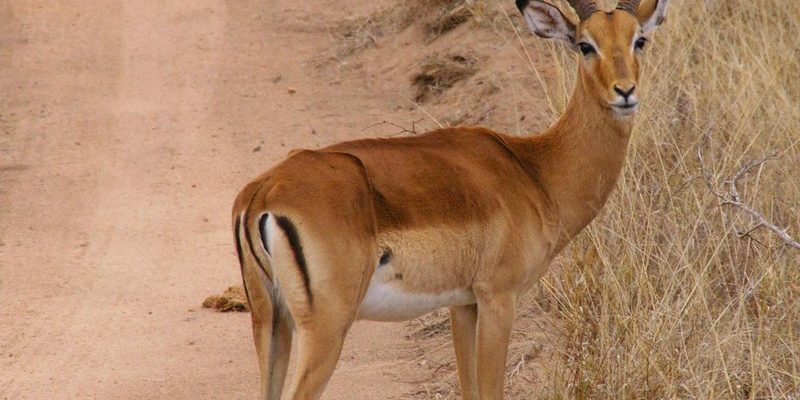
Just imagine watching an impala leaping through the air—it’s like watching a dancer perform a mesmerizing ballet, full of energy and elegance. These antelopes are not just beautiful; they’re also incredibly interesting. So, let’s dive into some of the coolest facts about the impala that will surely make you appreciate this remarkable animal even more.
1. Agile Jumpers of the Savanna
One of the most striking features of the impala is its incredible ability to jump. Impalas can leap distances of up to 33 feet (10 meters) in a single bound! This skill isn’t just for show; it’s a crucial survival tactic. When faced with predators like lions or cheetahs, these antelopes can make sharp turns and high jumps to escape. It’s like they have their own personal defense mechanism built right into their DNA.
Their legs are long and slender, built for speed and agility, enabling them to outrun threats. Imagine them bounding over bushes and streams in graceful arcs—it’s a breathtaking sight! So, next time you see a wildlife documentary featuring these beautiful animals, pay attention to their jumps. It’s more than just athleticism; it’s life-saving artistry.
2. Social Butterflies of the Animal Kingdom
Impalas are highly social animals. They often live in groups called herds, which can number anywhere from 10 to 100 individuals. These herds are mostly made up of females and their young, with a few males. Here’s the thing: living in a group provides safety in numbers. By sticking together, they can keep an eye out for predators and warn each other of danger.
Interestingly, male impalas tend to be more solitary or form small bachelor groups, especially during the rutting season. This is when they compete for the attention of females. Watching them engage in head-butting contests can be quite entertaining! Think of it as nature’s version of a competition show, where the best male gets to impress the ladies.
3. Unique Markings and Colors
Impalas have a rich reddish-brown coat that helps them blend into their grassland habitat. But what’s really fascinating are the white markings on their faces and rumps. These stripes aren’t just for fashion—they serve a purpose. The white markings help communicate with other impalas. When one runs away, the white patch on its rump stands out, signaling the rest of the herd to follow. It’s like an emergency road sign in the animal kingdom!
Their large, expressive eyes enhance their peripheral vision, which is crucial for spotting predators. Picture them grazing peacefully one moment and then, with a flash of white, bolting into action. It’s a natural ballet of beauty and alertness.
4. Excellent Browsers and Grazers
Diet-wise, impalas are *browsers and grazers*, which means they enjoy a varied menu. They eat leaves, shoots, and grasses, favoring fresh vegetation. What’s impressive is their ability to adapt their diet based on the season. In the rainy season, when food is abundant, they munch on the juicy green shoots. In the dry season, they switch to tougher grasses.
This flexibility plays a vital role in their survival, especially in habitats that can become harsh. Imagine being able to adjust your eating habits like that! It helps them thrive even when conditions are less than ideal, an impressive trait in the wild.
5. The Amazing Sense of Smell
Impalas have a keen sense of smell, which they use to forage and avoid danger. Their sense of smell helps them locate food, mates, and detect predators from afar. They can sniff out a lion before it gets too close, which is a huge advantage in the wild.
Just think about it: while we often rely on our eyes to see things, impalas rely heavily on their noses. This ability to detect scents helps them make informed decisions about their surroundings. If you ever find yourself in the savanna, you can be sure that an impala will have an excellent idea of what’s happening around it—like a superpower of smell!
6. Breeding and Birth
When it comes to breeding, impalas have their own unique rituals. Mating season occurs during the rainy months when food is plentiful. Males will display their strength by fighting each other, showcasing their prowess to attract females. Think of it as a sporting event where only the strongest emerge victorious.
After a gestation period of about 6 to 7 months, female impalas give birth to a single calf. The mothers are quite protective and often leave their young hidden in the grass while they graze. This strategy keeps the calves safe from predators, as they rely on their instinct to stay still and quiet. It’s a tough world out there, but mothers have evolved ways to ensure that their young have the best chance of survival.
7. Communicating Through Behavior
Impalas communicate through various behaviors and vocalizations. They use different stances, sounds, and even the position of their tails to convey messages. For instance, when an impala is alarmed, it may snort loudly to alert the herd.
In fact, you’ll often see them engaging in a behavior called “stotting”—when they jump high into the air while running. This show of agility isn’t just for fun; it sends a message to predators that they’re fit and healthy, making them less appealing targets. It’s like a confidence boost in the animal world!
8. Predators and Threats
As graceful as they are, impalas face threats from various predators, including lions, leopards, and hyenas. Their speed and agility give them an edge, but they’re not invincible. The challenge is navigating a world filled with dangers while also finding food and mates.
Interestingly, they often rely on other herbivores, like zebras and wildebeests, to help spot danger. When these animals sense a predator, they’ll alert nearby impalas, showcasing a teamwork dynamic in the wilderness. It’s a reminder of how interconnected life is on the savanna.
9. Conservation Status and Habitat
Impalas are currently classified as a species of *Least Concern* by the International Union for Conservation of Nature (IUCN). They are widespread across Southern and Eastern Africa, occupying savannas, woodland, and grassland habitats. However, habitat loss and poaching can threaten their populations.
Conservation efforts play a vital role in ensuring their future. Many national parks and reserves have been established to protect these animals and their habitats. As more people recognize the importance of conservation, there’s hope for both impalas and the ecosystems they inhabit.
10. Fun Facts About Impalas
Now that we’ve covered the essentials, let’s wrap up with some fun tidbits about impalas:
- Their scientific name is Aepyceros melampus. This is derived from Greek, meaning “high horned.”
- Impalas can run up to 50 miles per hour. That’s like a car speeding through a neighborhood!
- They have a unique “herding” behavior. When one impala takes off, the rest often follow without even knowing why.
- Impalas can live up to 15 years in the wild. With proper protection and a stable environment, that lifespan may increase!
The impala is not just another antelope; it’s a symbol of beauty, agility, and survival in the wild. With their fascinating behaviors and characteristics, it’s easy to see why they capture our hearts. So next time you find yourself daydreaming about the African savanna, remember the impala and all the stories it has to tell. Nature is truly an incredible storyteller!

